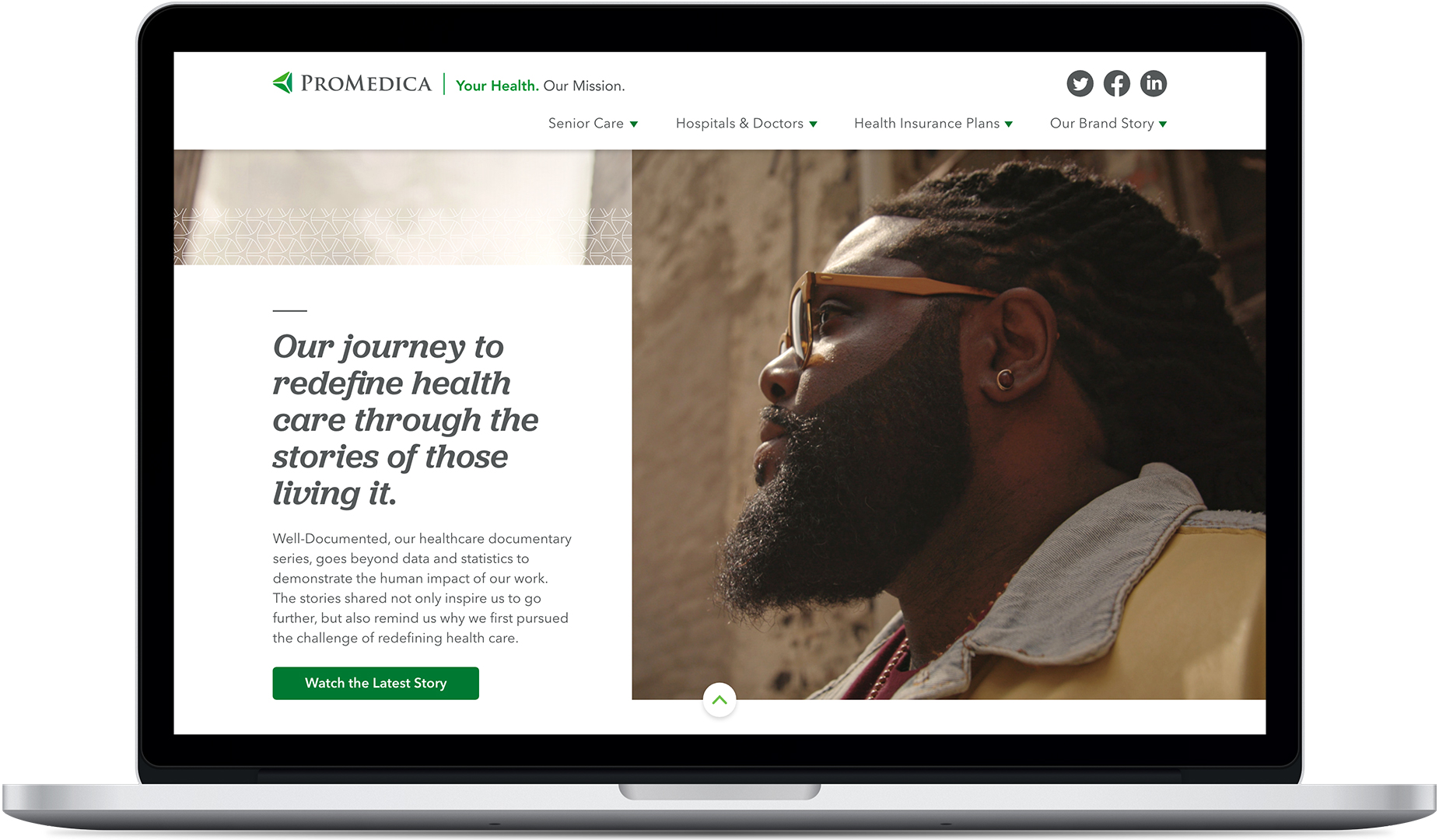PROMEDICA | ProMedica Stories
From health care facilities to health care everywhere.
From health care facilities to health care everywhere.
ProMedica takes an innovative approach to healing communities. It’s not just about treatment within four walls, it’s about well-being for all, wherever they are. That means things like blood pressure screenings where people live, work, play and even get their hair cut. It also means recognizing the role of art in the healing process and the importance of living a purpose-driven life. Creating an understanding of these unique practices required more than an ad. It meant spreading the word in an equally innovative and authentic way. That’s where our series of documentary shorts called ProMedica Stories came in. We highlighted people whose health and well-being have been positively affected by ProMedica. The results: A 44% increase in favorability and a 39% increase in purchase intent.
ProMedica takes an innovative approach to healing communities. It’s not just about treatment within four walls, it’s about well-being for all, wherever they are. That means things like blood pressure screenings where people live, work, play and even get their hair cut. It also means recognizing the role of art in the healing process and the importance of living a purpose-driven life. Creating an understanding of these unique practices required more than an ad. It meant spreading the word in an equally innovative and authentic way. That’s where our series of documentary shorts called ProMedica Stories came in. We highlighted people whose health and well-being have been positively affected by ProMedica. The results: A 44% increase in favorability and a 39% increase in purchase intent.
Consumer Research
Brand Strategy + Positioning
Advertising
Content
Public Relations
Social Media
Data Strategy + Analytics
Measurement Frameworks

PERSONAL. POWERFUL. TRANSFORMATIVE.
The campaign landing page was a hub that highlighted ProMedica’s commitment to transforming how care is delivered. Episodes centered around renowned leaders, people with life-changing experiences and even one whose journey is ongoing as a father of an autistic child.


TRUE STORIES YIELD REAL RESULTS.
54%
Felt Promedica Truly understands The relationship Between
economic factors and healthcare

PROMOTING HEALTH CARE TO PREVENT HEALTH SCARES.
A strong push on social media helped get the word out to relevant communities. We also tapped into influencers who were already leading discussions around redefining health care.